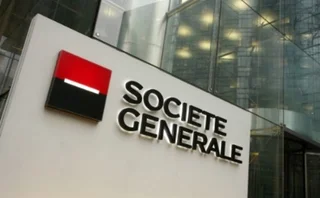
Securitisation matters

Banks and regulators seem to be caught between a rock and a hard place. On the one hand, interest rates across the globe are sitting at record lows, while banks have received multi-billion dollar bailouts courtesy of the taxpayer. On the other, businesses and households say they still face difficulties accessing credit, while lending rates in certain countries have ballooned.
This has been leapt upon by the press. In the UK, banks have been pilloried for charging excessive margins, while the Chancellor of the Exchequer, Alistair Darling, has warned UK banks on several occasions to increase the supply of loans at affordable prices.
There is a bit of an inconsistency here, though. While banks - particularly those in which the government has a stake - are being asked to increase lending, regulators are demanding financial institutions hold more capital. Meanwhile, much of the world is in the grip of recession, unemployment is rising and defaults on loans are mounting. Having underestimated the credit risks posed by certain borrower segments in the past, financial institutions are unlikely to make the same mistake so quickly. Another major problem is the continued shutdown of the securitisation market. Without a facility in which banks can lay off risk and free balance sheets, there is a finite capacity to make loans.
Banks need to repair battered balance sheets, so it is perhaps understandable - although not necessarily acceptable - that margins on many loan products have increased. However, banks also need to be prudent in their lending decisions and ensure they are sensible in pricing in credit risk, in what has become the worst recession in living memory. Higher capital requirements are, again, prudent in the current environment, but it does mean banks will eventually reach a limit to the amount they can lend without the ability to lay off risk through securitisation.
Even taking this into account, many politicians argue banks could do more. That may be so, but some contradictions still need to be resolved. Should banks look to lend more at lower rates? That is likely to require a resumption of the securitisation market, although with checks in place to dampen the exuberance that eventually led to a deterioration in underwriting standards in 2006.
Another alternative touted by some is a return to more traditional banking, where bank lending is constrained by the size of their balance sheets and the capital they have to hold against these assets. Throw in conservative credit risk measurement, and it would probably entail higher interest rates than borrowers have been used to.
Many aspects of the banking model are in flux. It is not yet clear which way the pieces of the puzzle will fall, but it is difficult to envisage a large-scale increase in lending at lower interest rates without some sort of functioning securitisation market.
Nick Sawyer, Editor.
Only users who have a paid subscription or are part of a corporate subscription are able to print or copy content.
To access these options, along with all other subscription benefits, please contact info@risk.net or view our subscription options here: http://subscriptions.risk.net/subscribe
You are currently unable to print this content. Please contact info@risk.net to find out more.
You are currently unable to copy this content. Please contact info@risk.net to find out more.
Copyright Infopro Digital Limited. All rights reserved.
As outlined in our terms and conditions, https://www.infopro-digital.com/terms-and-conditions/subscriptions/ (point 2.4), printing is limited to a single copy.
If you would like to purchase additional rights please email info@risk.net
Copyright Infopro Digital Limited. All rights reserved.
You may share this content using our article tools. As outlined in our terms and conditions, https://www.infopro-digital.com/terms-and-conditions/subscriptions/ (clause 2.4), an Authorised User may only make one copy of the materials for their own personal use. You must also comply with the restrictions in clause 2.5.
If you would like to purchase additional rights please email info@risk.net
More on Securitisation
Global banks look for profits in China ABS market
Regulatory change provides opportunity for international firms' structuring skills
Credit fears hold back US solar securitisation deals
SolarCity deals show potential and pitfalls of new asset class
Collateral damage: Capital proposals threaten Europe's ABS market
Insecuritisation
Securitisation touted as answer to '€4 trillion' funding gap
Securitisation industry group claims Europe faces big financing shortfall – and pushes securitisation as the answer
SG plans to securitise €1.9 billion of derivatives exposure
Deal is said to pay a coupon of 11% for first-loss protection – which some investors say is too low
"Deceptive and negligent": How the first CPDO got its AAA rating
An extraordinary Australian court judgement shines a light on the errors and deceit that led to the granting of an AAA rating to ABN Amro’s Surf constant proportion debt obligation in 2006. Lukas Becker reports
Dutch counsel confident of success as S&P faces new CPDO case
The fine handed out by an Australian court last year to ABN Amro and Standard & Poor’s was a rare success for post-crisis litigants in structured credit cases. The victors are hoping to repeat the trick in Europe – but what are their chances? Lukas…






